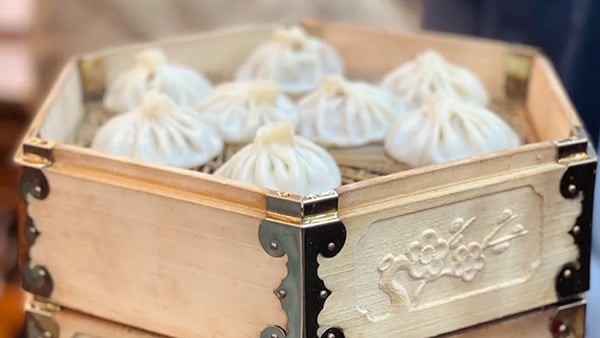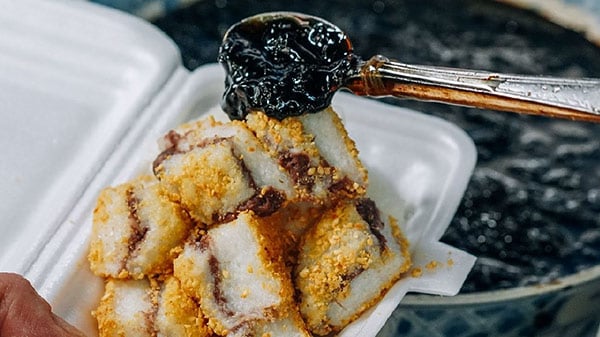Xi’an: Famous food every traveler should try
Wondering what to eat in Xi’an? Famous food every traveler should try is not an easy list to compile because there literally are just so many delicious and different dishes to choose from. With this culinary challenge on our hands, here’s what we did: Connected with our trusted guides on the ground and assembled the only source we think you’ll ever need to enjoy the very best Xi’an has to offer a food-loving adventurer. Expect a mixture of dishes favored by locals, emperors, and everyone in between. We’re sure you’ll make a few of these your very own!
Famous Xi’an food
China is so regionally diverse and with this comes diversity in diet and dishes that reflect the tastes and flavors of the people and places. Xi’an is located in the Shaanxi province in China’s North West, an area that is characterized by spicy dishes and generous use of mutton, noodles, bread, and broth. In fact, famous Xi’an food could be considered the ideal entry point for a Western traveler in China for its more recognizable dishes such as roujiamo and paomo. Hungry and want to get started? Let’s go.
Xi’an Burger (Roujiamo )
Xi’an Burger (Roujiamo )
Hot oil noodles (Biangbiang noodles)
Hot oil noodles (Biangbiang noodles)
Cold noodles (Liangpi )
Cold noodles (Liangpi )
Flatbread in mutton or beef broth (Yangrou/Niurou Paomo)
Flatbread in mutton or beef broth (Yangrou/Niurou Paomo)
Hot and sour dumplings (Suantang shuijiao )
Hot and sour dumplings (Suantang shuijiao )
Muslim-style steamed beef with wheat flour (Fen Zheng Rou)
Muslim-style steamed beef with wheat flour (Fen Zheng Rou)
Gourd-shaped fried chicken (Huluji)
Gourd-shaped fried chicken (Huluji)
Grilled meat skewers (Kao Rou Chuan)
Grilled meat skewers (Kao Rou Chuan)
Pita bread with gourd-shaped chitterlings (Hulutou)
Pita bread with gourd-shaped chitterlings (Hulutou)
Other Muslim Quarter specialties
Aside from the Muslim Quarter specialties we’ve mentioned in this guide already, there is a myriad of others (way too long for a single guide), so it makes perfect sense to create a reduced list of Muslim Quarter dishes you simply must try when wandering through this part of Xi’an that retains the flavors and atmosphere of the city’s ancient past as a commercial and culinary crossroad. If you can, picture how in centuries past, spices and ingredients from the Near East were melded with Chinese cooking methods, and you gain an appreciation not only of the Muslim Quarter’s heritage but how it is today as well.
Steamed soup-filled buns | Guantang Bao
Guantang Bao found in Xi’an’s Muslim Quarter is different from xiaolongbao, although they are both what’s commonly referred to as ‘soup-filled steamed buns’. Xi’an Muslim’s guantang bao are bigger than xialongbao. They are also made with a thinner ‘skin’ and more soup, with beef and lamb considered favorites among local diners. Just keep in mind these buns require exceptional chopstick skills, so if you consider yourself a novice, be sure to improvise - or ask for a fork!

Hot Peppery Meatball Soup | Hulatang
Stepping into China’s cuisine is like opening up a treasure trove of flavors, tastes, and sensations, and perhaps one reason for this is the rich culinary diversity that is found in all corners of the country. Hulatang, which originated in Henan and later became synonymous with Shaanxi province and Xi’an is one fine example of just how interesting food in China can be. Famous as a unique local breakfast, Hulatang is a kind of thick soup made with vegetables (potato, carrot, cabbage, cauliflower, and celery) and beef meatballs that are heavily seasoned with Sichuan peppercorn powder, ground white pepper, ginger, fennel, and aniseed. Typically, Hulatang is served with a piece of tuotuomo, the unique baked flatbread found in Xi’an’s Muslim Quarter.
Cured beef or lamb | La Niurou or La Yangrou
It seems the Xi’anese perfected the art of ‘slow cooking’ with many of their dishes and it’s easy to see how this was achieved with La Niurou or La Yangrou, which translates as cured beef or lamb. Cooked for a minimum of eight hours, the cured beef or lamb is served directly as a cold dish, especially for a Chinese New Year’s Eve dinner. Dedicated locals will spend up to four hours waiting in line to buy their favorite food. La Niurou or La Yangrou is also served ‘sandwich style’ by filling a baked leavened bread tuotuomo, as another version of roujiamo (burger).
Steamed glutinous rice cake | Zenggao
Chinese sweet dishes vary enormously from their western counterparts. While not nearly as sweet, they have their own delicious flavors, so if you’re curious about where to start, zenggao - or steamed glutinous rice cake - is the perfect dish to start your Chinese sweet journey. In fact, zenggao is like zongzi in terms of taste and texture. Local Xi’anese call it jingao and enjoy it for breakfast as well as dessert. Zenggao is made with glutinous rice, Chinese red dates and red kidney beans. When bought on the streets in Muslim Quarter, be sure to check out the enormous ‘bowl’ in which zenggao is prepared. An ancient Chinese cooking vessel, observing how it is still used today provides an insight into how different cooking methods have endured over centuries.

Fried persimmon donuts | Huanggui Shizibing
We all love donuts, right? Well, most of us do. And if you’re not a fan, maybe fried persimmon donuts will convert you. Legend has it the flaming red persimmon produced originated in Lintong; the location where the Terracotta Army was discovered. Huanggui shizibing takes ripe persimmon mash and mixes it with flour to form a dough. A small piece of dough is filled with sweet fillings that usually include crushed walnuts, sugar, Osmanthus jam, or rose jam. The dough is then fried in oil to create crispy skin and a soft centre. Our thoughts? Make this sweet treat a must-try, especially if you’re traveling during autumn.

Flatbread with lamb blood tofu soup | Fen Tang Yang Xue
This dish is another favorite paomo for local Xi’an people. It is a special soup called fen tang, which translates as ‘powder soup’. Why? Because it is boiled with 15 ground spices, including pepper, cinnamon, fennel, aniseed, clove and ginger. Tofu is added to the soup, then shredded lamb blood jelly is added. The soup is brought to the boil to cook. Vermicelli is added, along with chili oil, coriander, and garlic sprouts. For an authentic way to enjoy fen tang yang xue, take a traditional Xi’an Muslim flatbread or tuotuomo, break it into pieces, and dunk in the soup until it has absorbed the soup. Enjoy!
Fried dough twist soaked in seasoned flour mush | Youcha Mahua
Golden crispy mahua is a kind of fried dough twist with a history spanning thousands of years. Youcha means oil tea, but in fact, it is not tea. It is similar to Beijing’s local snack chatang, a flour gruel made by stir frying wheat flour with beef bone marrow oil and seasoned with salt, ground pepper, crushed roasted walnuts, sesame, almonds, and peanuts. Crispy mahua soaked in youcha provides a different texture and savory flavor that is equally delicious.
Stir-fried mung bean jelly | Chao Liangfen
Typically, liangfen, a mung bean jelly, is made as a cold dish. However stir-fired mung bean jelly cubes in Xi’an, especially in Muslim Quarter, are a popular savory snack for both locals and tourists. The mung bean jelly cubes are stir-fried with oil in a giant pan to which soy sauce and other spices are added. Adding a little theatre to the production, a single portion is covered with an enamel bowl, allowing it to stew a while until the jelly cubes absorb the sauce. Served with garlic, chili, and garlic sprouts - totally delicious!
Pan fried beef pancake | Niurou Bing
This round golden crispy pan-fried beef pancake is a must when you visit Muslim Quarter. The leavened dough is rolled into a long thin layer, brushed with oil, and then lined with beef mince, chopped scallions, and spices. The dough is rolled up like a scroll before being flattened and fried in a pan. A note for foodies: The difference between niurou bing and rou bing is that its meaty (and vegetable) filling is interspersed consistently throughout the dough as it’s rolled. The method of cooking is different. The entire doughy disk (bing is the name for any circular dough-based product) is deep-fried, producing layers and layers of flaky dough comparable to a croissant. Yum!
Wooden cages mirror cake | Jinggao
Non-locals usually confuse this bite-size snack with the ever-popular steamed glutinous rice cake, because they are pronounced in a very similar way. Small wooden steamers, no bigger than a hand, are used to make this dish. These are filled with glutinous rice flour. Once cooked, the rice is removed by inserting a tiny bamboo stick which effectively turns the dish into a ‘mirror’. The rice is dipped in a mixture of crushed nuts, sesame seeds, sugar, rose jam, or other toppings. The ‘mirror’ is held in your hand to eat, hence the name ‘mirror cake’ or jinggao.
Deep-fried sweet stuffed wheat flour dough | Zha Yougao
Yet another sweet dish, zha yougao looks like glutinous rice flour balls, however, the golden crispy zha yougao in Xi’an is a deep-fried wheat flour dough with sweet fillings made from sugar, sesame seeds, walnuts, and other ingredients. Locals enjoy zha yougao for breakfast (who wouldn’t?!) and it is considered the ‘must eat’ dish to be eaten on the day the Dragon Boat Festival is celebrated.
Glutinous rice cake drizzled with honey | Fengmi liang zongzi
Unlike regular zongzi wrapped in leaves and filled with sweet or salty ingredients, this zongzi is made only with sticky rice and firmly packed in a long narrow fabric bag before being boiled for 3 to 4 hours. After totally cooling down, simply use a thread to cut into small pieces and drizzle with rose jam and honey. A deliciously decadent summer treat.
Famous Xi’an restaurants
In a city with a history like Xi’an you’d expect to find at least a handful of what locals refer to as ‘time-honored’ restaurants. Indeed, there are many such restaurants, so when you’ve had your fill of street food snacks, book a table in one of these hallowed dining venues.

Xi’an Fanzhuang Restaurant
Xi’an Fanzhuang Restaurant first opened in 1929 and has traded on its well-earned reputation for delivering authentic Shaanxi cuisine and local flavors. A regular inclusion on the dining destination list of international dignitaries, local politicians, and celebrities, Xi’an Fanzhuang Restaurant continues to attract people like former Premier Zhou Enlai and novelist Lao She. Among their 200 dishes, the ten most famous traditional dishes remain perennial favorites.

De Fa Chang Restaurant
Located right next to the Bell Tower, De Fa Chang Restaurant is considered a ‘world of dumplings’. A veritable food heaven, you will discover over 200 different kinds of dumplings, in every imaginable (and unimaginable) shape, filling, and flavor. There are eight types of ‘dumpling banquets’ based on different standards and budgets.

Tong Sheng Xiang Restaurant
The 100 years old Tong Sheng Xiang Restaurant was originally started by three brothers who lived in the Muslim Quarter. It is now a signature restaurant in Xi’an that specializes in halal food, in particular, yangrou paomo - flatbread in mutton soup. The soup is cooked for nearly 48 hours and flavored with over 20 spices, which are added at different times throughout the cooking process.

Lao Sun Jia Fanzhuang Restaurant
Founded in 1898, Lao Sun Jia Fanzhuang is another halal food restaurant in Xi’an that is famous for flatbread in mutton or beef soup - yangrou paomo. Lao Sun Jia also serves Western China traditional cuisine and local flavors. Be sure to order the famous dishes that won the National Gold Awards when you visit.

Chun Fa Sheng
Yet another restaurant from last century, Chun Fa Sheng was founded in 1920 and is synonymous with famous Xi’an food, not least because of its best-known dish, hulutou paomo pita bread with gourd-shaped chitterlings. The restaurant is also famous for the creative ‘five elements dish’, which is made of pork intestines (metal), liver (wood), kidney (water), heart (fire), and hog maw (earth), each of which is prepared using a different cooking method.
Local cuisine restaurants in Xi’an
Looking for something a little more rudimentary? Then make your selection from our list of local cuisine restaurants.
Zui Chang’an
Located in a traditional-style courtyard on Shuyuanmen Street, very close to the South Gate of Xi’an City Wall, Zui Chang’an is a unique restaurant that specializes in Xi’an and Shaanxi cuisine. From famous signature dishes to local snacks, you will enjoy dining here. Xi’anese loves it so much that owners opened a second Zui Chang’an near the Bell Tower.
Chang’an Da Pai Dang
Chang’an Da Pai Dang also goes by the English moniker of ‘The Food Gallery Xi’an’ because the ‘collections’ of various types of Shaanxi cuisine make it more like a showcase than a restaurant. Its popularity with locals has seen a number of them pop up in Xi’an and each has been created with a distinct interior design. The restaurant in Saga International Shopping Mall attracts visitors for its Tang dynasty’s market style.
Zhaixiangzi
As a hidden gem in Fenxiang Alley, a popular dining area in Xi’an, Zhaixiangzi is the restaurant for authentic Shaanxi cuisine by using the best local ingredients. A long corridor with many pottery wine jars is the display center for interesting cultural information and a brief introduction of the signature dishes in this restaurant.
Baixing Chufang
Baixing Chufang means ‘folk kitchen’ and once you’ve dined here you’ll understand why. The restaurant offers authentic Shaanxi cuisine as well as other popular cuisines from around China, including roast duck, huluji fried chicken, sweet and sour pork with pineapple, wonton soup, and fried dumplings. There are several Baixing Chufang in Xi’an city, providing locals and travelers alike with convenient dining options.
For Yangrou Paomo Flatbread in Mutton or Beef Soup
There are special restaurants - and there are restaurants in Xi’an that specialize in a local Shaanxi specialty. Here’s our pick of the bunch based on local insider secrets.
Liuxin Niuyangrou Xiaochao Paomo
Liuxin Niuyangrou Xiaochao Paomo
Guoyuanzhai Mijia Paomo
Guoyuanzhai Mijia Paomo
Yizhen Lou
Yizhen Lou
Maguangrong Paomo
Maguangrong Paomo
Jianji Paomo
Jianji Paomo
Jingde Paomo
Jingde Paomo
For Roujiamo Xi’an Burger

Qinyu Roujiamo
Located at Dongmutoushi, near the Bell Tower, Qinyu Roujiamo is regarded as a must-visit for tourists. Open only from 7 am to 1:30 pm daily, it is always busy but people still queue up for a tasty roujiamo here.
Fanji Lazhi Roujiamo
Find Fanji Lazhi Roujiamo at the Zhubashi Alley just opposite the Drum Tower. With the longest history of roujimo, Fanji Lazhi Roujiamo remains the favorite of Xi’an locals.

Ziwulu Zhangji Roujiamo
Ziwulu Zhangji Roujiamo has a number of restaurants in Xi’an, with two of these even operating 24 hours. Enjoy the house specialty: Freshly baked buns with a perfect crust matched with perfectly braised meat. In our books, this makes for the perfect roujiamo.
Weijia Liangpi
Weijia Liangpi is a successful fast-food chain with over 300 restaurants in China. They not only serve roujiamo and liangpi cold noodles, the restaurants also serve other Chinese dishes, such as Cantonese and Taiwanese. You can even find a western-style hamburger here.
For dumplings and noodles

Jiasan Guantang Baozi
Jiasan Guantang Baozi is the most famous restaurant for guantang bao - steamed soup-filled bao. So popular is it that it remains busy all year round. The good news is it’s easy to find because you only need to follow the long queue to the front of the restaurant. Popular among the visitors both domestic and international.

Zhiliang Zheng Jiao
Operating over 30 years and relocated three times, Zhiliang Zheng Jiao is still famous and popular among locals for its tasty steamed soup-filled dumplings and nutritious ‘eight treasures porridge’. Day or night, expect reliable good quality food that’s reasonably priced.

Xiao Liu Soup Dumpling
Founded in 1994, Xiao Liu Soup Dumpling now operates as a chain restaurant with over 40 restaurants in Xi’an. Besides the steamed soup dumplings, there is also other local Shaanxi food on offer.

Tian Xia Di Yi Mian
Catering to an international audience, Tian Xia Di Yi Mian also has English in its name, which translates to First Noodle Under The Sun. Find many different sorts of noodles here, including biangbiang noodle, saozi noodle, and spinach noodle. The signature noodle is just one single noodle, which measures a remarkable 3.8 meters in length. Served in a bowl with an additional two different bowls of soup, the noodle is eaten separately, allowing the diner to enjoy the different flavors.
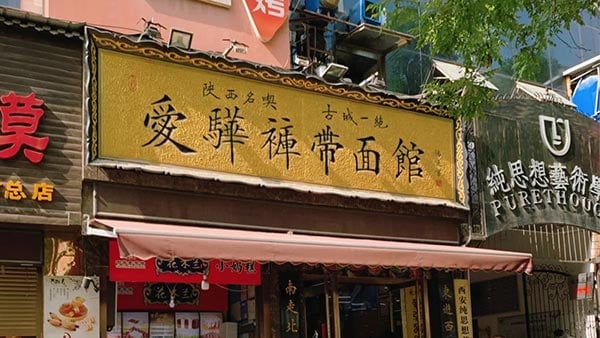
Aihua Kudai Mian Guan
Aihua Kudai Mian Guan is the restaurant preferred by locals for its biangbiang noodle and kudai (belt) noodle. Opening at 10 am daily, customers line up to purchase tickets. Noodles are not served in regular bowls. Instead, they are served in larger stainless-steel basins.
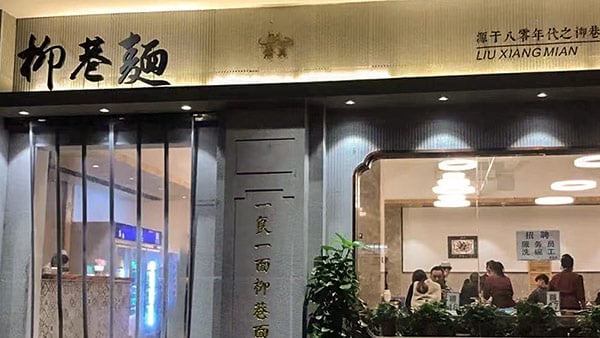
Liuxiang Noodle Restaurant
The noodles at Liuxiang Noodle Restaurant are also handmade or hand-pulled, however, they are not as flat and wide as biangbiang noodles. With a firmer, chewier texture, the noodles are mixed with braised beef in brown sauce, vegetables, and tiny fried tofu pieces. Served with soy sauce, vinegar, chili oil, and coriander. So good!
For local Xi’an street food and snacks
Yong Xing Fang
Yong Xing Fang
Yuanjiacun Guanzhong Tiyan Di
Yuanjiacun Guanzhong Tiyan Di
Beiyuanmen Street and Xiyangshi Alley
Beiyuanmen Street and Xiyangshi Alley
Sajinqiao Alley
Sajinqiao Alley
Dapiyuan Alley
Dapiyuan Alley
Zhubashi Alley
Zhubashi Alley
Other specialty restaurants in Xi’an
Daqin Xiaoyan
Daqin Xiaoyan is a restaurant themed in the style of the Qin Dynasty located in Lintong. The interior design, crockery, menu, and staff uniforms all reflect the Qin dynasty culture. All set menus feature Shaanxi cuisine. Feel like dressing up? You can! Customers are welcome to wear costumes of the Qin dynasty while dining. You can even use a seal to stamp your menu as a special souvenir.

Tianlong Baoyan Vegetarian Restaurant
Tianlong Baoyan Vegetarian Restaurant is located near Big Wild Goose Pagoda. Discover reasonably priced tasty food from a huge range of options.
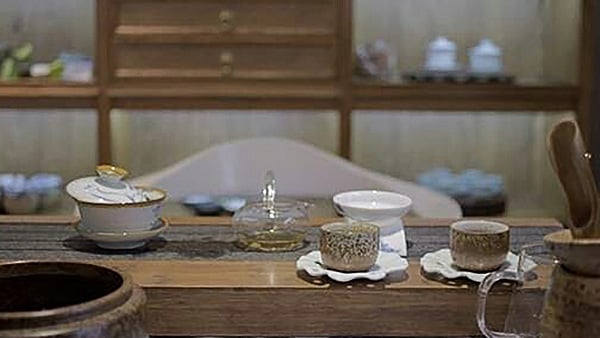
Kuandu Teahouse
Kuandu Teahouse is not only a teahouse for drinking Chinese tea, it’s also a restaurant for delicious Chinese food cooked with tea. Beautifully designed in a zen-style, it’s a perfect balance to street stalls and busy restaurants.
Mo Fusion Cuisine
Mo Fusion Cuisine is a fine dining restaurant that specializes in creative molecular cuisine. More than just a little out of this world, the food will give your taste buds a totally different experience.
Xi'an Bars and Dining
What’s a holiday in China without imbibing the local food and drink? If you’ve spent a night sampling local specialties at the night markets, you may want to shift your focus to other options, like the many bars and dining precincts to be found in Xi’an. Here’s our selection of go-to destinations.


